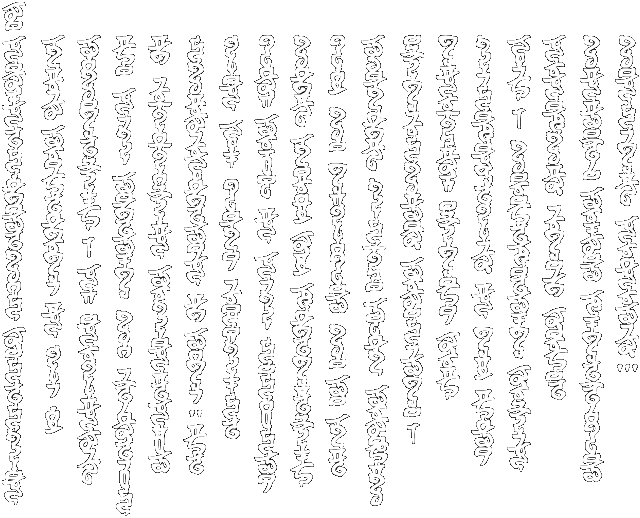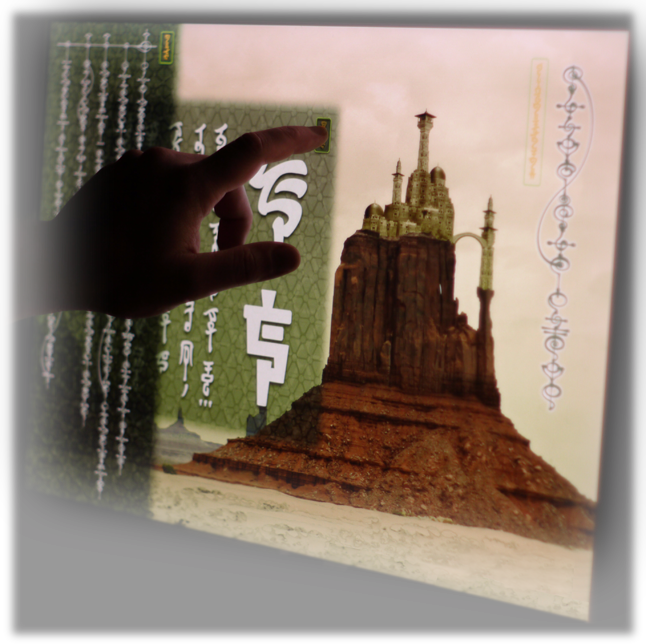| The modern Vulcan script is the most common in everyday life. While most educated members of society can easily read traditional calligraphy and it is also quite prevalent, they rarely think of it as purely utilitarian. The letters of the modern script evolved over many centuries from the ancient logogram system which is commonly referred to as Tik-Nahp (“each thought”). Here is a sample of a model paragraph (“Stonn killed the le-matya”) in both Tik-Nahp on the left vs. the modern script—Iyi-Gotavlu-Zukitaun—on the right. Notice the isolation of characters in the original system vs. the way they are linked and flow on the right in the modern script Golic Vulcan language. | I’nam-tor gotavlu-kitaun ish ik dan-tsukik na’ha’kiv t’kanok-gad. V’yak kup-telv-tor danan t’shila’es-kisu k’ek’saven vanu-tanaf-kitaun – heh ish-ves ved tsukik – riwehat pakagoshau u’ta is’boshik goh. Du’wehk-tehtvun ki’wakrubal zunlar t’gotavlu-zukitaun s’ma’os-torektra t’bikuv-kitaun ik wimish Tik-Nahp. La’nam-tor li-fal-nahptra ik °Stal Stonn le-matya° bai’Tik-Nahp na’los’rak heh Iyi-Gotavlu-Zukitaun na’gas’rak. Beglana’voh sameskaraya t’zun-torektra tehnat spo’ta ma n’naf heh yumau au na’gas’rak bai’iyi-zukitaun t’Gol-Vuhlkansu. |
 |
|
Then and Now |
Ish-Wak Tehnat La-Wak |
| There are a few of the ancient characters which appear commonly in modern life. Those who have attained Kolinar in particular often identify themselves overtly with the ancient name for the discipline. | I’nam-tor zamu t’ma’os-bikuv-kitaun ik i’ma n’is la-wak na’iyi-ha’kiv. Wa’gluvau k’ashiv veh ik ma akteibuhl t’Kolinar ish-sha’sha’es bai’ma’os-ahm t’tafar. |
 |
|
| This text shows the inventory of every sound in Modern Golic Vulcan rendered in the standard practice paragraph. The text flows from left to right top to bottom. | Gluvau nash-kitutra eku t’kanok-ralibi t’Iyi-Gol-Vuhlkansu bai’yidor t’gotavlu-huhrsaya-nahptra. Yumau kitutra s’los’rak na’nahal t’gas-rak hek s’fik na’nahal t’lanet. |
 |
|
| It is important to note that traditional calligraphy and the standard script do occur together in the same context quite frequently. Any information related to literature or poetry is more likely to show up in front of one’s eyes in calligraphy. Browsing historical records or even reading for pleasure would likely produce the more ornate writing by default—while for non-verbal commands or other interactions with technology systems one would use the standard script. Vulcans deal easily with both systems simultaneously. When asked how it can be logical to juggle two very different kinds of writing instead of simplifying things into just one, Vulcans are very likely to query in return, “How could it be logical to ignore and forget the defining attributes of one’s past for the sake of some present efficiency when none is required?” | Nam-tor yauluhk beglanau n’ta ved k’ashiv k’ka-ek’sitra-klai paresh-tor vanu-tanaf-kitaun gotavlu-zukitaun teretuhr. Nam-tor weh-kesik ta gluvau n’fan-ro’fori ik ma n’tersaya na’kitau-tanaf il zhitanaf bai’tanaf-kitaun. Kesing sagluvau bi-yem t’vesht-vipladan il ruhm telv na’tizh weh-fanet-kitaun shating—v’yak na’sviribaya ri-zhit-bosh il na’vath-svatorai k’ek’mishan-torektra kesing is-tor veh gotavlu-kitaun. Ka-wak k’mohk kup-el’rekau Vuhlkansu on t’torektra. Ish-wak ik deshkau >Kup-nam-tor ta el’rukuvtau n’dahr-torektra maut-natyaik ozhikaik uf< — Kesaing maut-kesing deshkau Vuhlkansu, >Kup-nam-tor bau heh yen t’mesprah-romosh t’vesht-visak’a t’veh na’terai ik ein-yeht-urgam’es t’la-wak uf ruhm-reh ya’bolau n’rim<. |
 |
|
| for more detailed information on the standard script, please see the full article. | Na’lof gla-tor n’weh-shefik-ro’fori pa’gotavlu-zukitaun—sanu—dzhina’voh ovsot-saven-svin. |
Search • Pstha
-
Recent Posts • Tuwak Kitalu
Comments • Tuhskaya
- Heather on Vulcan Calligraphy
- John H. Harris on Vulcan Font Update • Uzhaya t’Hiktra ik Zun
- Heather on Vulcan Calligraphy
- Devon on Volunteerism • Rivlidalsu’es
- Briht’uhn on Vulcan Calligraphy
Archives • Oska
- April 2014 (1)
- September 2013 (1)
- January 2012 (2)
- December 2011 (1)
- September 2011 (1)
- June 2011 (1)
- April 2011 (1)
- January 2011 (1)
- December 2010 (4)
Topics • Navel
Categories • Mohnaya

